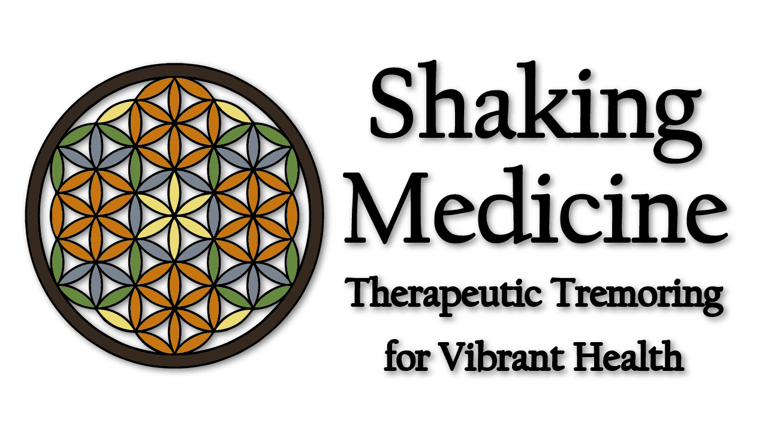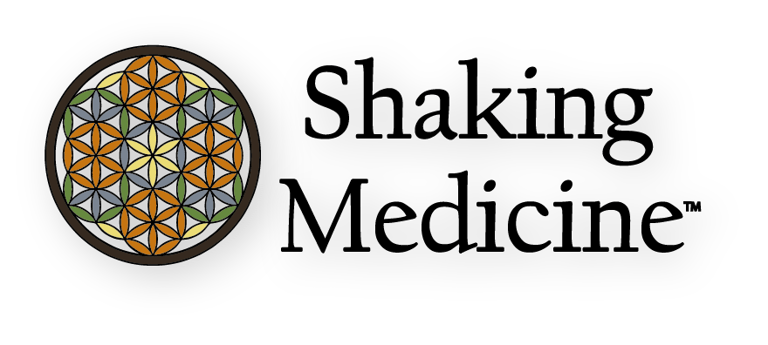Add your promotional text...
What’s the Difference Between Therapeutic and Non-Therapeutic Shaking?
Discover the difference between therapeutic and non-therapeutic shaking in Shaking Medicine. Learn safe ways to manage non-therapeutic tremors online or with coaching.
FOUNDATIONS
Dr Keith R. Motes
9/10/20258 min read


Shaking: From Fear to Healing
Society often mislabels uncontrollable shaking as alarming, but we are here to share with you that not all spontaneous shaking is bad. This modality Shaking Medicine, founded by Dr. Keith Motes, taps into neurogenic therapeutic shaking to soothe the nervous system into parasympathetic dominance and to release trauma. Instinctive therapeutic tremoring is a human gift to be celebrated and not feared. This post unpacks the difference between therapeutic and non-therapeutic shaking, with a focus on safety in approaching non-therapeutic tremoring conditions with Shaking Medicine.


How Does Therapeutic Shaking Soothe?
Therapeutic shaking, the core of Shaking Medicine, uses intentional neurogenic therapeutic tremoring, a mechanism that we are born with, to restore balance and homeostasis. It’s a guided, safe process that:
Soothes the nervous system bringing it into parasympathetic dominance.
Releases stored trauma, like animals shaking after danger.
Boosts vitality and emotional resilience.
And many more benefits (see our benefits blog).
Participants of Shaking Medicine workshops report feeling grounded, lighter, more free, deeply relaxed, better sleep, chronic issues dissolving, etc. after sessions.
Why Society Misjudges Shaking
Cultural norms, like “stop fidgeting” or "stop tapping your foot" and historical fears of uncontrolled movement, cast spontaneous shaking as problematic. This has been ongoing for a really long time in our culture for thousands of years with religious stories from ancient times of "witches being burned at the stake," and "people who cathartically shake needing an exorcism," etc. painting this to be something demonic. Even in more modern times you have people like the Shakers & Quakers who were cultivating themselves with this mechanism where governmental power stamped them out.
There are many examples and stories of this mechanism being suppressed. The point is that this mechanism empowers us, which is why we ultimately think that this suppression has happened. Various powers at be and through time do not like the people to be in their power. Itt has been suppressed so long that it's been almost completely lost in the west to the point where probably the suppressors have lost it. We are here to bring it back and help people step back into harmony, balance, and heal of the many chronic issues that are plaguing our society today.
When people experience unexpected spontaneous shaking, they might be misdiagnosed by medical professionals who aren’t familiar with our natural, animalistic healing instinct. This tremor is often seen as a problem to stop rather than the body’s healing mechanism at work, sometimes leading to lifelong prescriptions. Medication is important and we should use it if necessary, though generally it should be a last resort if at all possible. Medication often masks symptoms instead of healing the root cause which can create a lifelong dependency significantly costing us in our health and finances.
Also, we must acknowledge that western medicine often focuses on what makes massive profit instead of healing. They largely use reactive medicine and lifelong prescriptions which make them massive profit. If you cure your chronic problems with your own genetic nervous system mechanism that you are born with, then they don't make their fortunes. So, do us all a favor and spend a little bit with us so that you make Shaking Medicine second nature again, so you don't have to spend tremendous amounts with them later in life.
For some “non-therapeutic” conditions (like those listed below in this post), this shaking might actually be the nervous system’s attempt to self-correct using its innate tremor mechanism. However, fear of losing control or lack of awareness about this process can cause us to contract, amplifying the issue. Education is a key part as understanding what this gift is can shift our response from fear to acceptance.
Ideally, starting Shaking Medicine while in a healthy state acts as preventive hygiene for our nervous system, tonifying and cleansing it keeping the big problems from ever arising. This is taking 'medicine' proactively, whereas medication is generally taken re-actively when the problem is exacerbated. Shaking when we’re young and healthy means we won’t have to shake so much when we’re older and it means that we are less likely to end up with chronic issues. So, wherever you are on your journey stop procrastinating and start shaking!
If you’ve discovered Shaking Medicine after a condition has become more chronic, don’t worry—you can still begin your journey toward balance and harmony at any stage. We’re here to support you with care! Keep reading.


What Are Non-Therapeutic Tremors?
Non-therapeutic shaking is involuntary spontaneous shaking that may signal distress or exacerbate issues, unlike therapeutic shaking’s healing intent.
At its heart, therapeutic shaking heals and nourishes—it calms, clears, and strengthens your system. Non-therapeutic shaking, on the other hand, can cause more harm than good, potentially straining the body. Even therapeutic shaking can become non-therapeutic if overdone, so it’s important to listen to your body, build your capacity sustainably over time, and find the right balance for you.
It is possible that spontaneous shaking, from at least some of the 'non-therapeutic' shaking diagnosis, is your body trying to naturally work out the underlying issue with therapeutic tremoring, but due to a lack of understanding it gets labelled as bad and medicated instead of allowed. Choosing to practice is your empowered decision and comes at your own benefit and risk, especially since large-scale studies on therapeutic tremoring, particularly for these non-therapeutic shaking conditions, are still limited—Western medicine hasn’t prioritized this research yet due to various reasons mentioned earlier in this post. We’re passionate about changing that and would love to conduct or collaborate on rigorous mainstream scientific studies. Reach out if you or someone you know is interested!
Here’s how Therapeutic & Non-Therapeutic Shaking differ:
Therapeutic Shaking:
Purpose: Soothes the nervous system and releases trauma through intentional neurogenic therapeutic tremoring.
Intentional: Guided with regular integration to sustainably embody this.
Outcome: Enhances calm, vitality, and emotional resilience.
Non-Therapeutic Shaking:
Not Purposeful: May indicate medical issues, such as non-therapeutic shaking in Parkinson’s or epilepsy.
Not Intentional: Often erratic and completely involuntary, lacking intentional guidance and may be distracting and overwhelming.
Outcome: May cause strain, fatigue, stress, fear or exacerbate underlying conditions.
Dr. Keith Motes advocates a “Less is More” approach to keep therapeutic shaking safe.
Does Non-Therapeutic Shaking Have Healing Potential?
When spontaneous shaking occurs, especially in the context of conditions often labeled as non-therapeutic—like Parkinson’s, epilepsy, or withdrawal—it’s easy to assume it’s entirely harmful or something to suppress. However, the reality can be more nuanced. In some cases, what appears to be non-therapeutic shaking might actually include a therapeutic component, where the body is attempting to self-correct or heal at a deeper level. For example, the nervous system might be activating its innate tremor mechanism to release stored stress or trauma, which is causing the problem, and it instead gets seen as bad or something to be suppressed instead of allowed. It is very possible that before the issue arrived to a chronic state that their nervous system was giving them various signs and signals so that they could reverse it. Someone who is aware and embodied in Shaking Medicine can more easily pick up on these signs and signals than someone who is not as "we don't know what we don't know." On the other hand, it’s also possible that the shaking is indeed non-therapeutic in nature, potentially exacerbating an underlying issue if not approached with care.
This overlap creates a gray area that can be confusing. For instance, someone with a neurological condition might experience shaking that feels distressing, leading them or their healthcare provider to label it as a symptom to stop. But part of that shaking could be the body’s natural attempt to restore balance—like how animals shake after stress—where allowing it to express, relaxing into it, and letting go into it can allow the chronic holding patterns, trapped emotions, and truma to vibrate free.
The challenge lies in discerning what’s happening, especially since fear or lack of awareness about therapeutic tremoring can lead us to do our best to shut down the process entirely. If we allow the shaking to unfold gently, with proper guidance, it might support healing in unexpected ways, even in complex cases. However, if the shaking is primarily non-therapeutic and tied to a condition that needs medical attention, it could require a different approach, possibly integrating Shaking Medicine gently while titrating out of the medication over time.
This complexity is why we advocate for a cautious, personalized approach in Shaking Medicine. Each person’s experience is unique, shaped by their health, history, and circumstances. If you spend your whole life not allowing your instinctive mechanism of therapeutic tremoring, which is hygiene for your nervous system there may be a whole lot of pent up tensions, stress, anxiety, trauma, etc. that adds on top of each other eventually creating a massive bundle of stored energy that will eventually express itself whether you like it or not, so it is better to begin your Shaking Medicine journey sooner than later.


Is Shaking Medicine Safe for Non-Therapeutic Conditions?
Shaking Medicine is generally safe but requires caution with conditions linked to non-therapeutic shaking, such as but not limited to:
Neurological: Parkinson’s, epilepsy, Multiple Sclerosis, Dystonia, Alzheimer's, etc.
Mental Health: Bipolar Disorder, Schizophrenia, dissociative disorders, psychosis, etc.
Other: Addiction withdrawal, drug effects, stroke, hypoglycemia, brain injuries, seizures, etc.
Conditions associated with spontaneous non-therapeutic shaking are often viewed negatively. If you have any of these or similar conditions, consider checking with a healthcare professional before starting Shaking Medicine and certainly consider our 1:1 personalised coaching sessions if you do. Be aware that many healthcare professionals may not know about therapeutic tremoring, as it’s not part of their medical training. We suggest approaching Shaking Medicine for any of these conditions with extreme care.
Testimonial: “As a child, I had stress-induced epilepsy, and Shaking Medicine helped me realize my body was trying to release stress through non-therapeutic shaking. Now, with guided sessions, I feel safe, relaxed, and clear-headed, allowing my body to heal.” ~ Shaking Medicine Student


Starting Therapeutic Shaking Safely
Therapeutic shaking acts as nervous system hygiene, ideally started early to prevent chronic issues. For those with conditions linked to non-therapeutic tremors (e.g., Parkinson’s, epilepsy, or addiction withdrawal, etc.), personalized 1:1 coaching sessions with Dr. Keith Motes or trained facilitators are the safest way to begin. These sessions tailor the practice to your unique health needs, ensuring a gentle, sustainable approach to manage non-therapeutic shaking effectively. If you don’t have these or other severe conditions (see precautions blog), you can dive straight into therapeutic shaking through Shaking Medicine Online, offering guided sessions to soothe your nervous system at home.
Safety Guidelines:
Consult a healthcare provider, noting limited awareness of therapeutic shaking in mainstream healthcare.
Use personalized 1:1 coaching sessions for conditions associated with non-therapeutic shaking.
Read our 'Precautions Blog Post' for more important safety guidelines and to learn about other severe conditions that may require extra care when practicing Shaking Medicine.
Practice at your own benefit and risk, as large-scale studies are pending.
Less is more especially with sensitive conditions.
Key Takeaways
Therapeutic shaking soothes via neurogenic tremoring; non-therapeutic shaking may signal overwhelm and distress.
Cultural stories and myths label uncontrolled spontaneous shaking as bad and harmful possibly leading the suppression of something extremely healing and empowering.
Many 'non-therapeutic shaking' conditions that are diagnosed may have therapeutic elements through the spontaneous shaking that is happening.
Start with 1:1 coaching for conditions or Shaking Medicine online for others.
More research is necessary. We invite funding and collaborators to perform rigorous studies in managing non-therapeutic shaking conditions with therapeutic tremoring.
FAQ
What’s the difference between therapeutic and non-therapeutic shaking?
Therapeutic shaking soothes via controlled neurogenic tremoring; non-therapeutic shaking may harm, distress, or overwhelm and is often tied to conditions like Parkinson’s, epilepsy, Multiple Sclerosis, etc.
Is shaking safe for non-therapeutic conditions?
Maybe! Ensure reading this blog post, medical consultation, and customised 1:1 coaching sessions for safe practice.
How do I start therapeutic shaking?
If you're not with severe conditions you start in our online Shaking Medicine Community on Skool.

